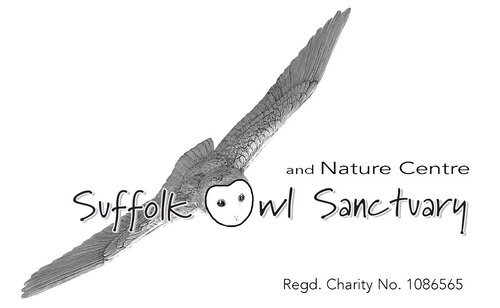Hello again from all of us here at SOS as we make a start for the New Year ahead. And a special welcome to our regular supporters and all those who may be visiting our blog for the first time!
If you are an adopter of one of the owls here at the centre, then we're like to take this opportunity to thank you for your kind consideration and support. We hope that as this diary of events through 2008 unfolds, you will come to feel part of a 'family' which primarily is concerned with the care & welfare of wild owls and other birds of prey.
Besides being a diary, we also like to use the blog as a general notice board to keep you informed about global developments in the field of raptor conservation & management that come to our attention. But also, please use it as a direct link back to us, to keep us informed of your comments, queries & suggestions.
If don't have much of an idea about the type of work that we do here at SOS, then why not check back through our Blog Archive for 2007, which you'll find contains many interesting and fascinating stories about what went on at the Sanctuary last year and it will give you some insight into what we are all about.
Now, to matters in hand! SOS is open all year round, but although this is one of our quietest times in terms of visitor attendance, it doesn't mean the work stops. In fact, we use the winter months to do all manner of things that simply would not be possible during the height of the summer, when visitor numbers prevent us from doing a lot of the necessary structural & repair work that is needed.
Much of this is weather permitting, of course, and at the moment, we have two outdoor projects that are the subject of serious attention when it's not chucking it down. The first is the rebuild of our secluded breeding aviaries: ours have been in use - by the birds! - for many years and as they didn't look as though they last another winter season, so the decision was made to tear them down and start afresh.
Down with the old... and up with the new
This was quite an undertaking both financially and in terms of manpower, but we have made good progress thanks to a generous donation of timber from the local Jewsons in Stowmarket, a free supply of Twyweld Mesh Netting from Clarkes of Walsham, and some sturdy work from our volunteers led by Mick, our able handyman. This means that with any luck we will be on track to have the aviaries completed by the start of the breeding season, which begins around Easter time. As you can see from the photo's, Mick and his team certainly have their work cut out for them - but we have every faith that their expertise will win the day and all will be finished in time!
Our other major project is to re-house our chipmunk colony within the Woodland Walk area at SOS. Our recently-promoted Senior Falconer, Matt Lott (Congratulations, Matt! Mine's a pint...!) has taken this on board as a personal project and we will of course keep you up-dated with its progress and the date when our new "Chipmunkery" will be open for business. And again, a huge "thank you"is due to both Jewsons and Clarkes - without their generous support, our life could have been a lot more problematical!
When the weather did get deathly grey outside, we thought it was time to give an interior facelift to our visitor reception area, which thankfully meant nothing more than a generous lick of paint! After three years of the same colour, we decided a new colour scheme would brighten up the place and our mood - and so we appropriately turned to a colour called "Spring", which is actually a nice shade of Apple Green. And that reminds me - now would be the appropriate time to thank Anna & Andrew (who together with Maz run our visitor reception and adoptions admin) for all their decorative skills with regard to this makeover.
So, we're getting ready for the year ahead and hopefully we will have the pleasure of welcoming you to our fresh new surroundings in the not-too-distant future. In the meantime if you would like to contact us with any ideas or suggestions that you may have for the centre, then please contact us by clicking this link - we are always pleased to hear from you.
Thanks again, and Best Regards,
The SOS Team.

















































